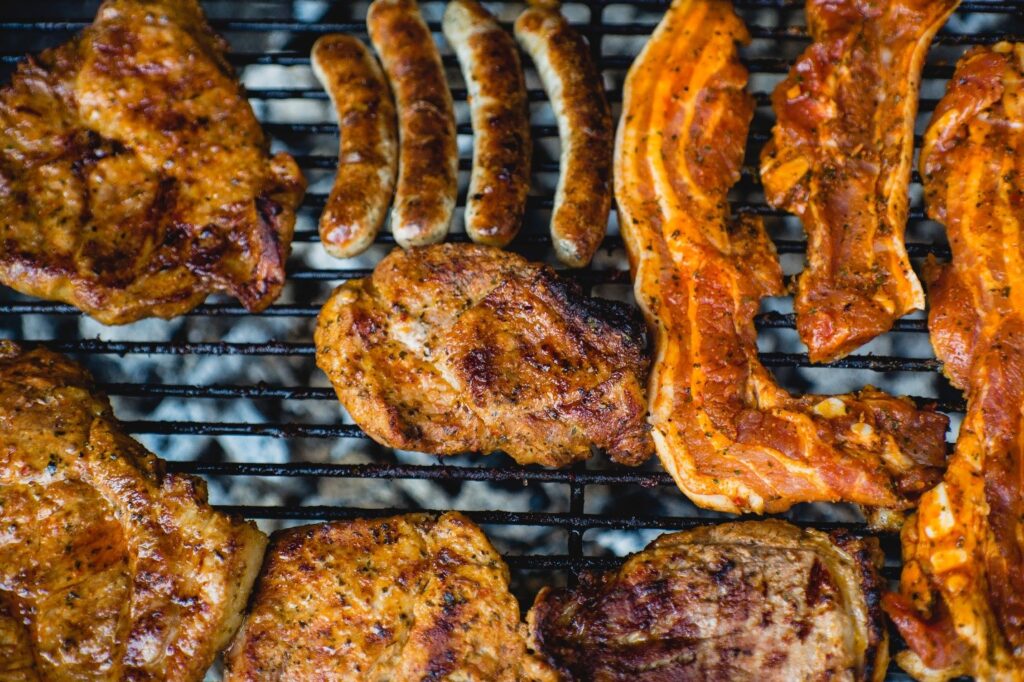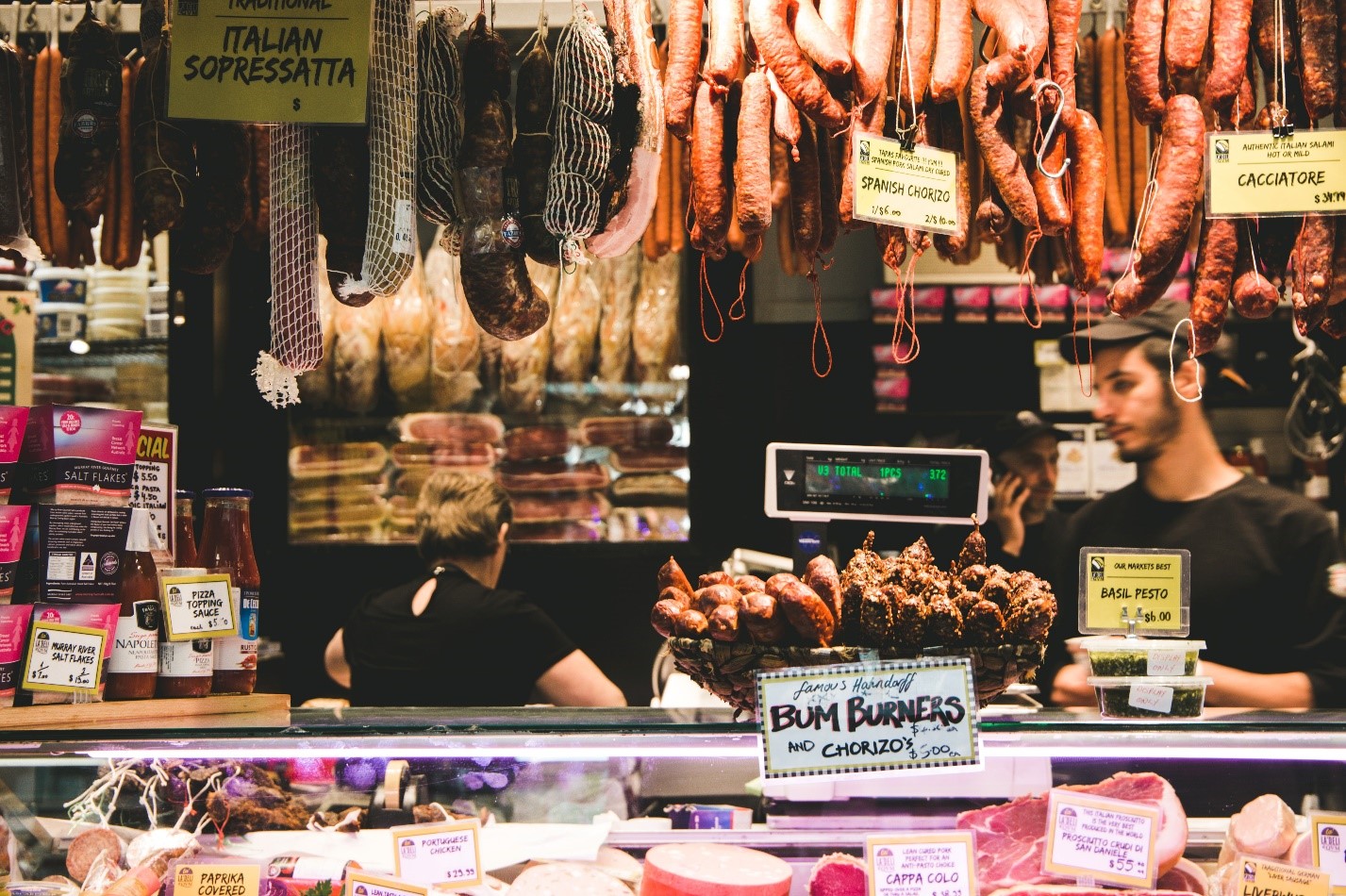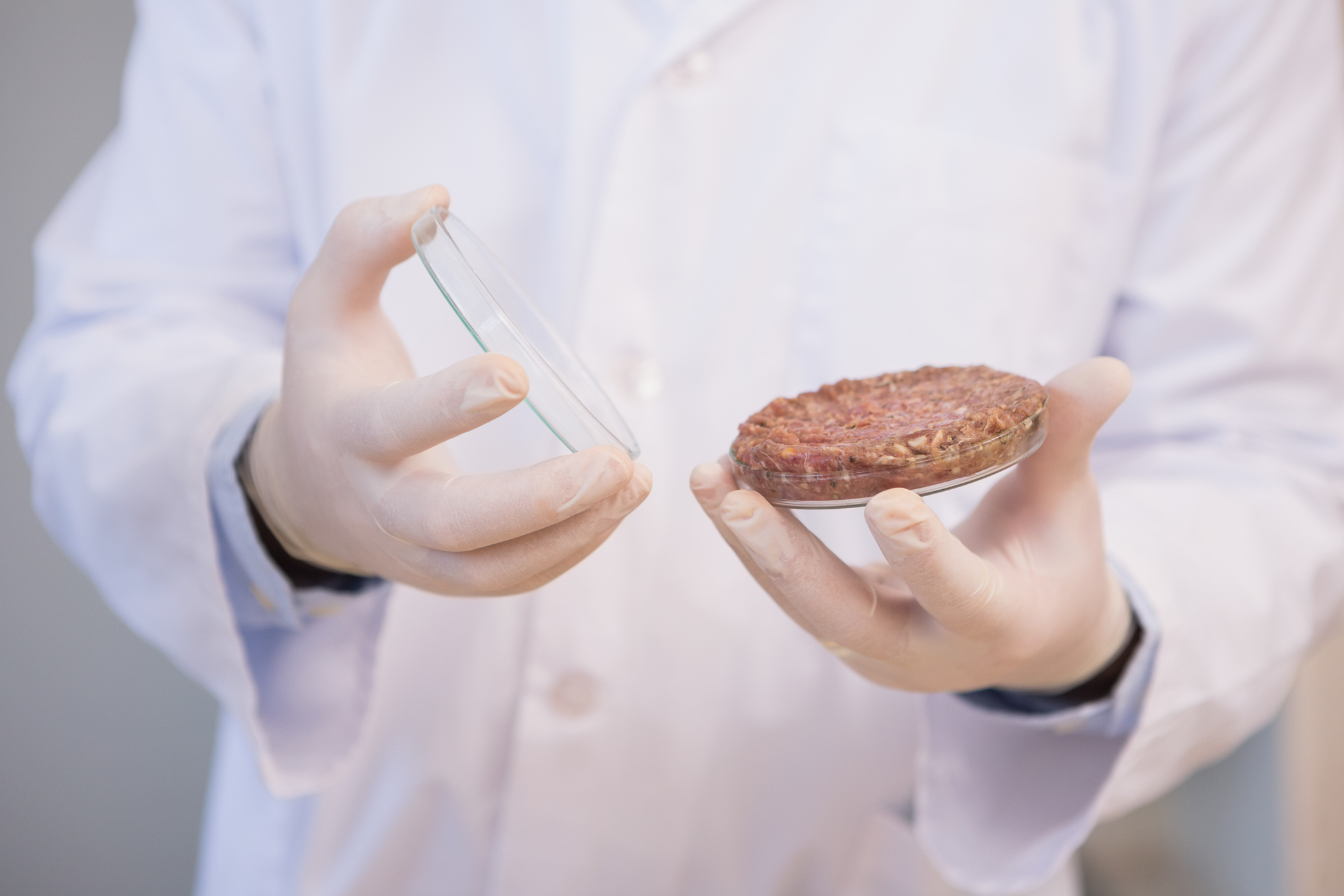This year was slated to be big for the US meat industry. Then came COVID-19. Time reported that by the end of April, the pandemic changed the economic and agricultural landscape so drastically that American meat producer Tyson Foods warned in a full-page New York Times ad that the “food supply chain is breaking.”
The virus has made it increasingly difficult to turn animals into store-ready packages of pork chops or ground beef, despite the fact that America’s farms are still packed with animals raised for meat production. That’s because meat processing companies across the nation have paused operations at several plants where workers have tested positive for COVID-19. Beef production was down nearly 25 percent year-over-year, while and pork production was down 15 percent, according to the USDA’s weekly report from April 27.
COVID-19 and Animal Welfare
Over the last few decades, the meat processing industry has become more mechanized, which is good for animals, but not for American factory jobs. Humans are increasingly expected to be replaced by robotics in slaughterhouses, and from an animal welfare standpoint, automation is generally supported.
But until then, COVID-19 has been ravaging workers at meat processing plants all over the US. At least 5,000 workers have tested positive for coronavirus and at least 20 people have died, according to the United Food and Commercial Workers International Union. Chicken processors on the Delmarva peninsula have been particularly hard-hit. Allen Harim Foods plants in Delaware and Maryland were forced to “depopulate” two million chickens because they lacked the staffing to process these birds.
Related: Why Meat Shortages are Looming in the Coming Weeks
Depopulation is normally used to eliminate diseased animals, not healthy ones. But the country’s industrial system for raising animals has led to a dilemma: when the plants are shut down, workers don’t know what to do with the animals because the production of meat is so high. And demand for meat remains high. The National Chicken Council predicts that 2020 per capita consumption of chicken will be a little more than 100 pounds. That’s almost as much per capita consumption as beef and pork combined.
The Vegetarian/Vegan Argument
The UN reported in a 2016 Environment Program that “livestock often serve as an epidemiological bridge between wildlife and human infections,” and that, “this is especially the case for intensively reared livestock.”
Much like SARS (which was also caused by a coronavirus linked to a Chinese wet market), as well as swine flu, bird flu, COVID-19 spread from animals to humans, starting with those who worked in, or visited, the wet market. It is suspected that those who contracted the virus did so by eating or touching an animal who was infected. But is this reason enough to become a vegetarian or vegan?
Some people are eating less meat, in part because they are having a harder time finding it in grocery stores. Others are taking this time to reflect on what they put in their bodies and meat is one of the foods they have chosen to cut back on. But while companies like Beyond Meat and Impossible Foods saw tremendous demand for their products over the last several years, some say they might have a hard time surviving the pandemic.
One issue could be the price. A Beyond Meat burger sells for about $13 a pound, as opposed to beef, which, for now, sells for about $4 a pound. Many would-be vegetarians might find the price of these meat alternatives unpalatable. However, meatpackers are likely to see their efficiency drop as they reconfigure workplaces to adhere to physical distancing guidelines – and consumers can expect to see higher meat prices and lower supplies at the grocery store.
The Case for Meat
Some have argued that if we didn’t use animals for food, we wouldn’t have created situations where diseases, including COVID-19, were passed to humans. But that claim fails to consider the complicated dynamics of human and animal relationships. Humans and animals will always closely coexist in one way or another.
To ensure we’re not making one another sick, the safest bet is try to mediate that coexistence. It is true that if humans were to stop eating their meat, we would probably have less contact with animals that we’re either raising or capturing from the wild for food. But even if we did go entirely vegan, we would still have contact with animals that may carry pathogens that are foreign to the human immune system.
Humans have been eating other animals for millennia. For a good portion of that time, we’ve been eating domesticated animals that we raised as well as hunted wild animals. And since eating animals is a global norm and a necessity in many places, it’s irrational to deduce what the world would be like if we were all vegan.
The Uncertain Future of the Meat Industry
Industries don’t regulate themselves, and the meatpacking industry isn’t going to be an outlier. COVID-19 has been relentless and brutal and, so far, there is no vaccine to protect those most vulnerable from getting sick. More meatpacking plants will continue to close and those that remain open will have more line workers will getting sick. Until there is the will to change how the meatpacking industry handles worker safety, the situation won’t improve.
No one knows what the demand will be for the new norm post-pandemic, so there will likely be some shortages in the supply chain. There is a difference between a shortage and not having meat at all. From the time beef is harvested until it reaches the meat case at the grocery store is about 14 to 17 days. Consumers must remember to stay calm and resist panic buying.










Join or login to leave a comment
JOIN LOGIN